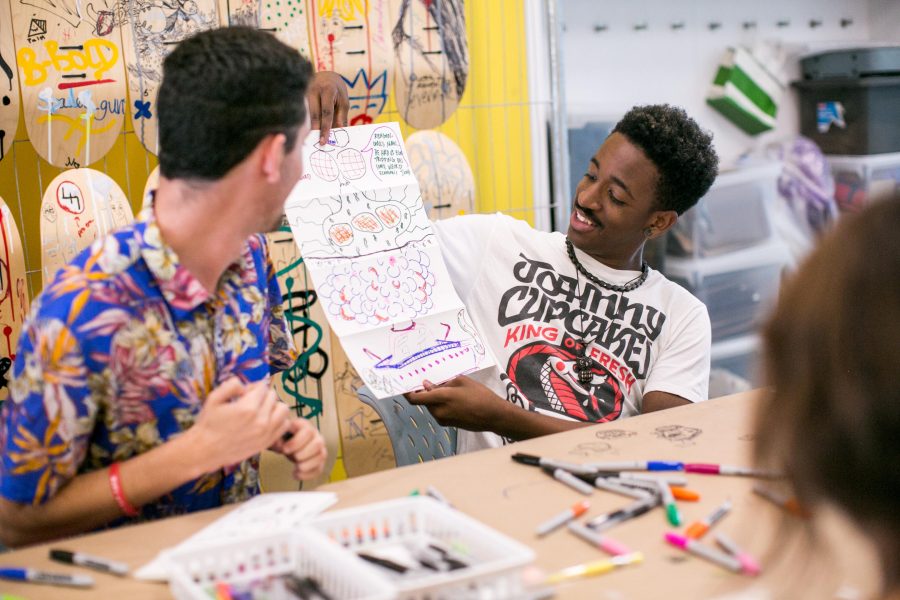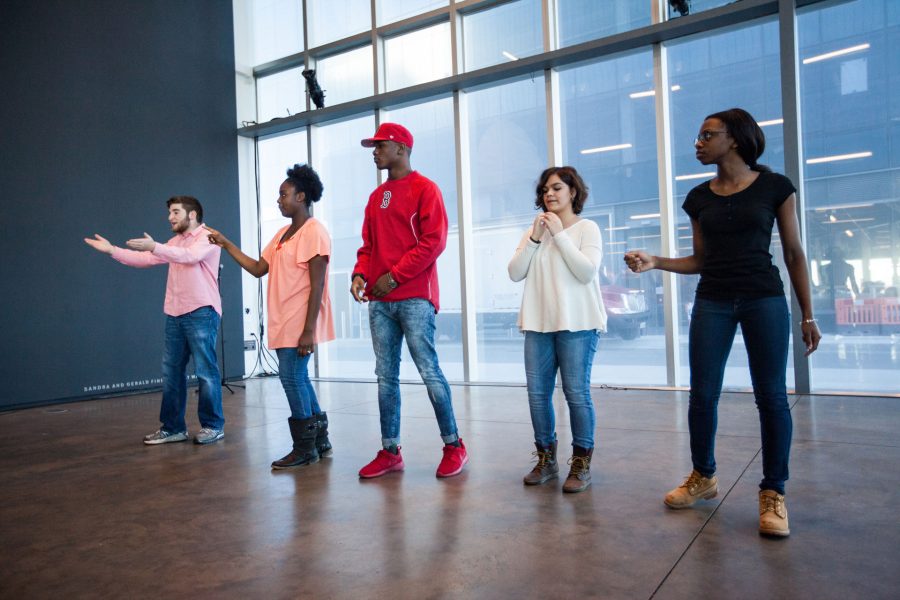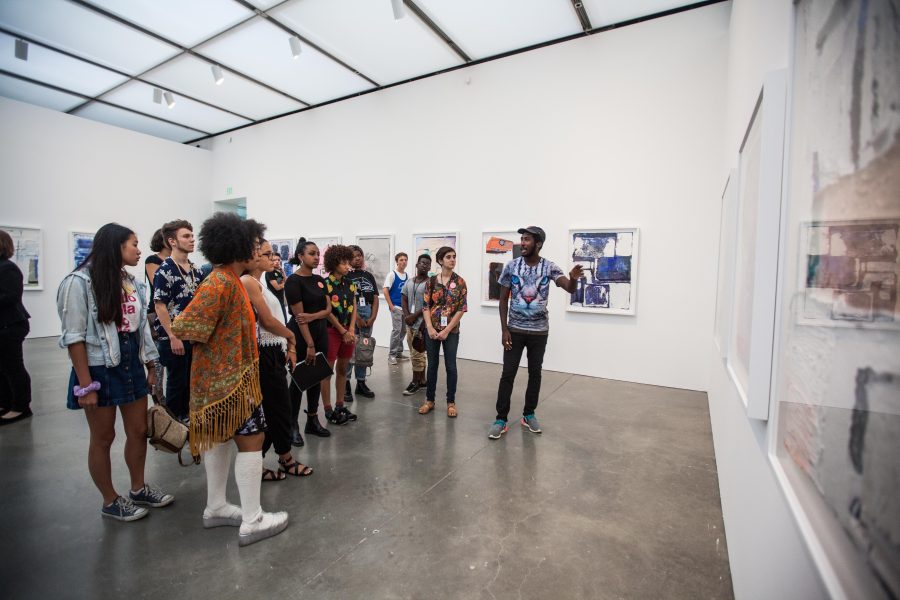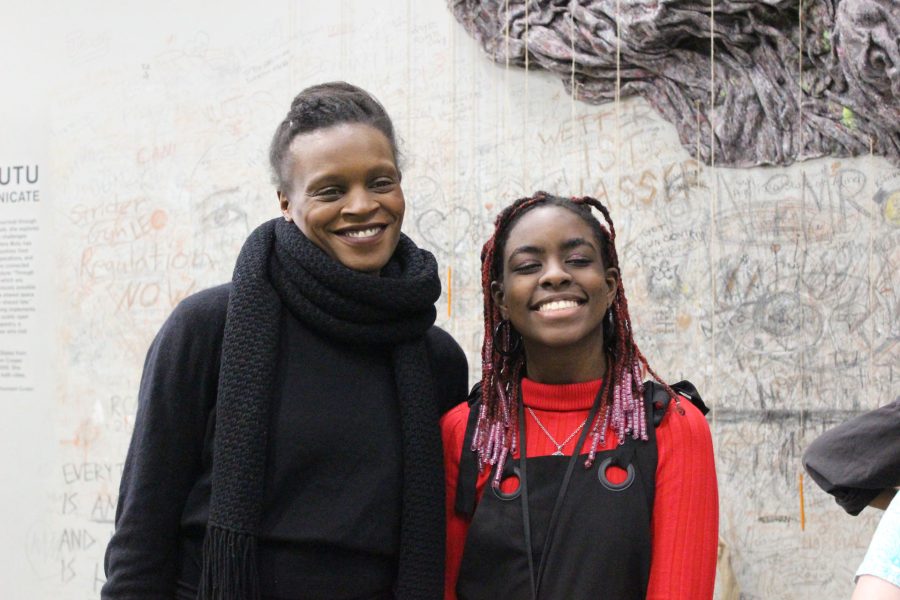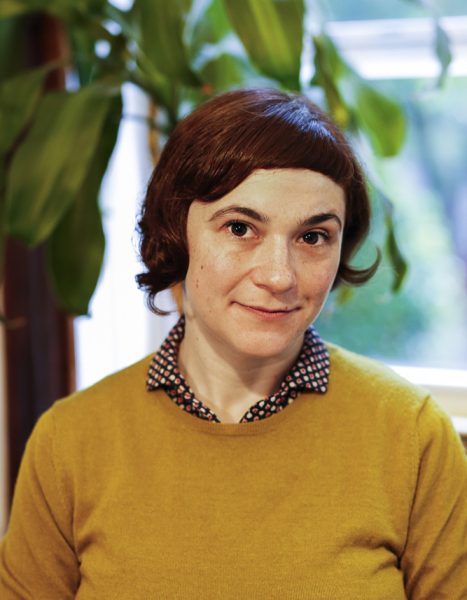Building Brave Spaces is coming this November. Leaders from across the nation and across sectors will gather in Boston to mobilize the field of teen arts education. As we look back on the last ten years of our own Teen Convenings, countless teen nights, teen workshops, Teen Artist Encounters and more, we reflect on the long-term impacts of teen programs. We are also looking forward and thinking critically about how to mobilize the field of teen arts education for a better future. Given the challenges teens face today they need arts programs now more than ever—to create, to express, to learn, and most importantly, to be heard.
Teen Arts Education
If you have worked in or with a teen arts program you have probably experienced the benefits and challenges of non-school-based arts programming. You may have seen teenagers experience transformative moments, learn new skills, gain confidence, and develop leadership qualities. But what are the long-term impacts of teen arts education? How do we know we are making a difference that extends beyond the turbulent years of teenhood and influences the formation of one’s long-term identity? What is the value of teen arts programs for teens who might not continue working in the arts? In 2015 Danielle Linzer, now Director of Learning and Public Engagement at the Andy Warhol Museum, was Project Director of Room to Rise, a study led by the Whitney Museum measuring the lasting impacts of teen arts education. Room to Rise quantified impacts through hard data as well as qualitative testimonials from participants in museum-based teen arts programs. We had a conversation with Danielle to dig into above-mentioned questions. The following insights emerged from the discussion and reflect her deep understanding of teen arts education.
But what is it about teens?
Teens. Teenagers. Adolescents. These young humans are experiencing radical emotional, physical, and psychological changes (*cue a stuttering David Bowie). These shifts make teens hypersensitive—experiences are rich, intense, and unforgettable. They are ‘trying on selves,’ becoming independent thinkers, and beginning to think philosophically about life. Experimentation and rebelliousness are central to the transition to adulthood as they fail, learn, and try again. For all of these reasons, art education during the teenage years produces salient moments that impact youth in the long term:
I walked away understanding why it’s important to question who I am. And I don’t think in American society that we really do get that ability; we don’t get to question who we are, because society tells us, this is who you’re supposed to be…Youth Insights allows…young people to learn who they are, but learn who they are through art and in that define themselves.
Charles Galberth, Youth Insights Alum, Whitney Museum of American Art, from Room to Rise
Why non-school based arts programming?
Non-school teen arts education programs create spaces where teens can express the many facets of their growing identities. They can try on the hats of their personalities and learn from their peers. They learn who they want to be and how to be in a space free of the judgments of school teachers or guardians. In museum settings, teens are often valued for the very idiosyncrasies that can make learning in a traditional school environment challenging. A teen reflected on this at the 2016 National Teen Convening at ICA/Boston:
At a discussion, I talked about how very specific abilities, such as mathematical aptitude, are valued over others. I then trailed off unconfidently, but my film teacher Cliff said, “I know exactly what you’re saying. A school has the ability to make or break a person.” Hearing my own teacher affirm the reality of such a poor and often-overlooked part of most schools helped me forgive myself for not being a cookie-cutter student. From that point on, I was more inclined to value the way I am different.
Beatrice Espanola, Fast Forward Member, ICA/Boston
In many ways the contemporary artistic practice mirrors the trials of teenhood. Contemporary art deals centrally with pushing boundaries, critiquing and questioning power structures, and designing or imagining future possibilities based around equity, inclusion, and bold creativity. Art allows teens to engage with their criticality and rebellious tendencies through a generative process and consequently experience achievement and confidence.
Other alumni describe similar personal growth—a steadily emerging sense of identity, confidence, achievement, and empowerment—as a powerful, lasting benefit of intensive teen programs.
Room to Rise, 2015
The making of art is also a rigorous process. Teenagers learn from the combination of rigor and creativity demanded of them when working on creative projects, assisting visiting artists, and developing or planning museum events. Through making art, teens are asked to engage in constant decision-making. One must think through outcomes, make choices, and find new solutions when presented with an undesirable result. The transferability of skills like critical thinking, decision making, and creative problem solving are endless. Some teens will go on to work in museums or as artists themselves, but others will move on to become lawyers, farmers, or community leaders and they carry this toolbox with them.
How do we make our teen programs better?
Knowing that anecdotal evidence of long-term impacts of teen programs is backed statistically by hard-won evidence is exciting, but there is real work in figuring out what is next. Now that we know teen arts programs have long term impacts on participants, what can we do to make them better? How can we craft programs that have positive long-term benefits and focused outcomes?
The Room to Rise study included an interesting finding that teens rate their experiences higher when in diverse program groups that incorporate students from multiple ethnic, cultural, and socioeconomic backgrounds. The findings did not clearly depict why this is so—or what in particular about being in diversified groups led to a higher-rated experience, but findings like this help us glean insight about how to create the most impactful programming for teens. They also bolster the idea that teen programming in general supports the long-term social sustainability of a museum. Not only are teens impacted in the long-term, but the museum itself is propelled towards progression, self-reflection, and equity when fully engaged with teen programming across the institution.
Despite a cache replete with evidence for long-term impacts of museum-led arts programs on teens ability to become employed, successfully finish a project, make a work of art, or become a leader among peers, what speaks to us in our current cultural moment is the power of institutional listening. When teens are immersed in non-school, arts-based programming, they feel they are listened to. The value of being heard is unquantifiable—and perhaps immeasurable.
I understand now the importance of making my voice heard in a productive way, and that is something that will last a lifetime.
Cecelia Halle, Teen Arts Council. ICA Boston
Read the full Room to Rise report.
We are thrilled to have Danielle on the Advisory Committee for Building Brave Spaces: Mobilizing Teen Arts Education national conference!
Danielle Linzer is the Director of Learning and Public Engagement at The Andy Warhol Museum. At The Warhol she oversees education, interpretation, programming, and outreach strategies for audiences of all ages and abilities, both in the museum and in the community. Prior to her arrival at The Warhol, Danielle was Director of Access and Community Programs at the Whitney Museum of American Art, where she managed broad institutional programming, compliance, and audience development efforts around accessibility and inclusion, as well as community-based partnerships and outreach strategies for populations that have traditionally been underserved by cultural organizations. In 2016 she published Room to Rise, findings from a multi-year research initiative investigating long-term impacts of teen programs in art museums, in collaboration with the Walker Art Center, the Contemporary Arts Museum of Houston, and the Museum of Contemporary Art, Los Angeles. Danielle received her B.A. from the University of Pennsylvania and holds an M.S. in Leadership in Museum Education from Bank Street College.
